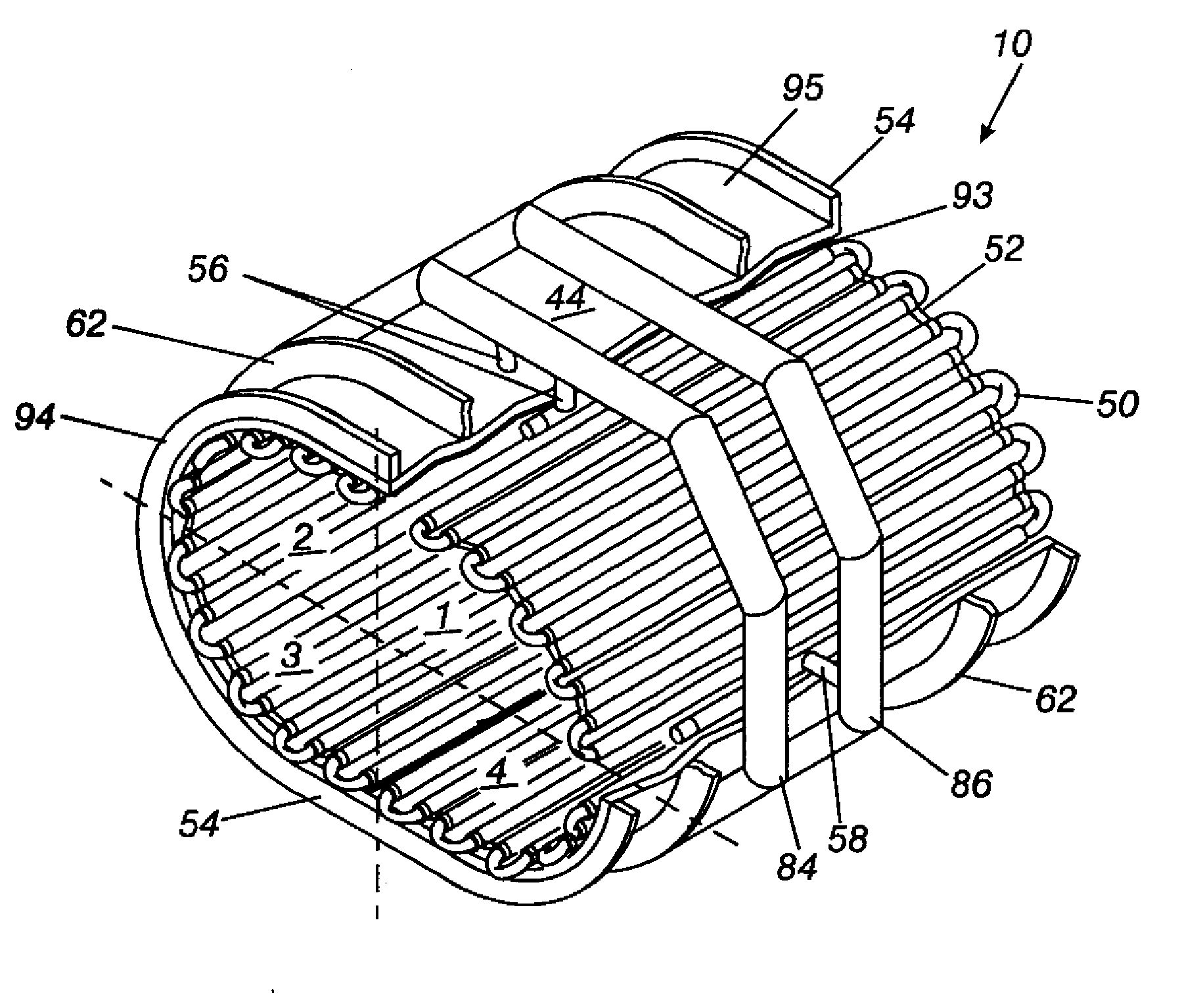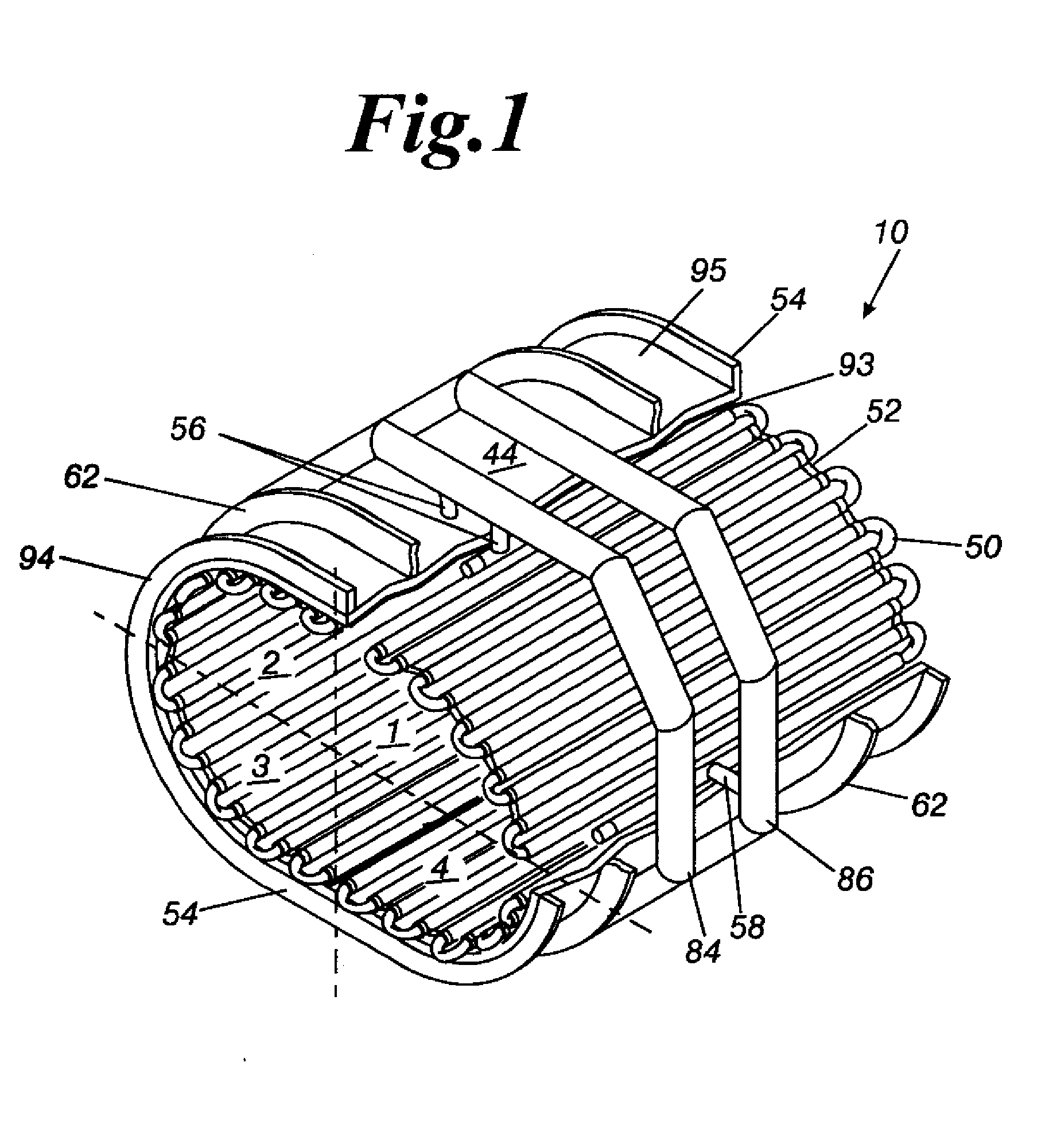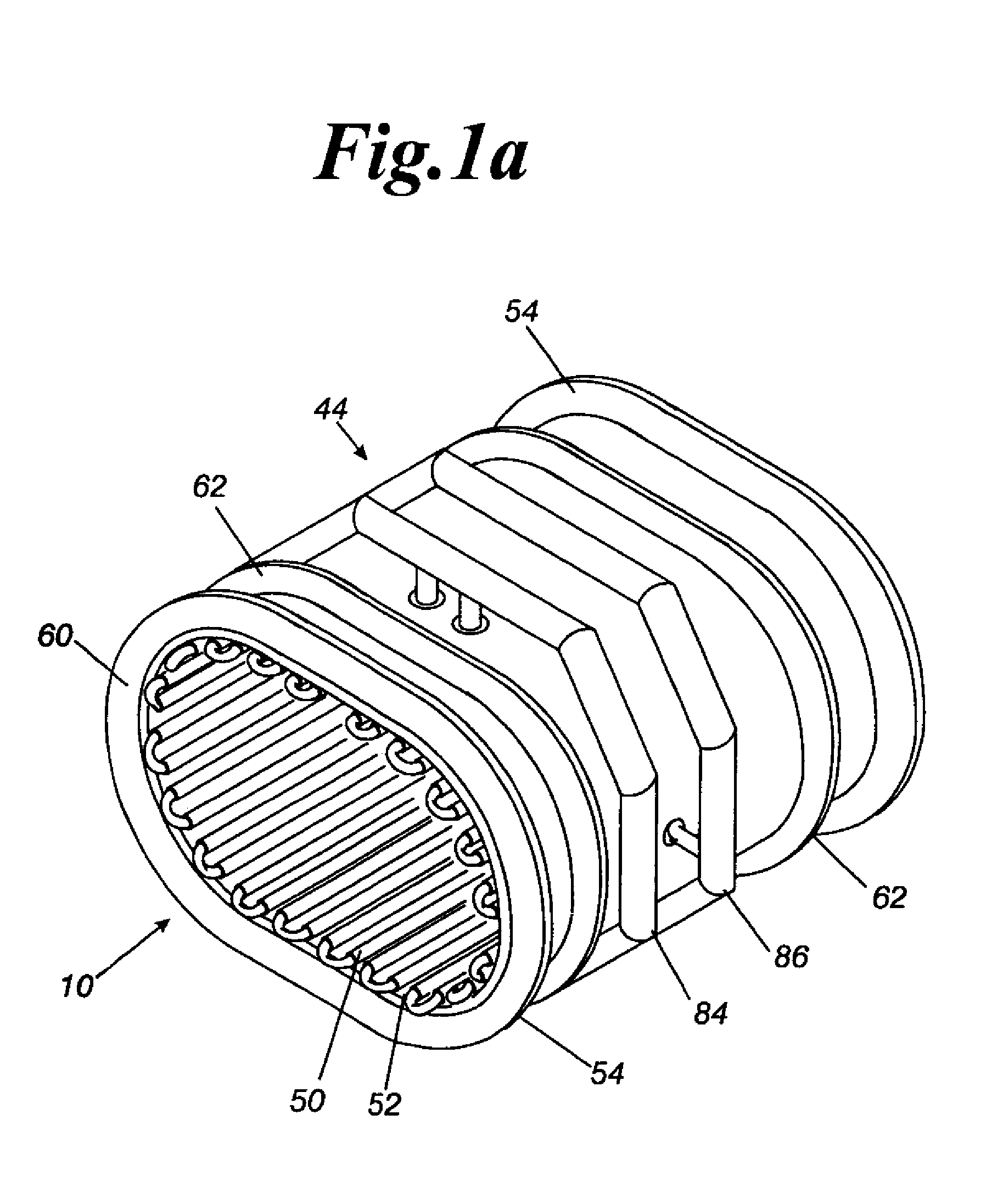Heat exchanger system used in steel making
- Summary
- Abstract
- Description
- Claims
- Application Information
AI Technical Summary
Benefits of technology
Problems solved by technology
Method used
Image
Examples
Embodiment Construction
[0045] As required, detailed embodiments of the present invention are disclosed herein, however, it is to be understood that the disclosed embodiments are merely exemplary of the invention, which may be embodied in various forms. Therefore, specific structural and functional details disclosed herein are not to be interpreted as limiting.
[0046] The heat exchanger system 10 comprises at least one panel of sinuously winding piping 50 having an inlet 56 and an outlet 58, an input manifold 84 in fluid communication with the inlet of the at least one panel, an output manifold 86 in fluid communication with the outlet of the at least one panel, and a cooling fluid flowing through the piping. The heat exchanger system 10 cools hot fume gases 36 and dust that is being evacuated from a metallurgical furnace 80 and its supporting components. The piping is an assemblage of sectional lengths of connected tubes mounted side-by side, wherein the connected tubes are secured to each other with a li...
PUM
| Property | Measurement | Unit |
|---|---|---|
| Temperature | aaaaa | aaaaa |
Abstract
Description
Claims
Application Information
 Login to View More
Login to View More - R&D
- Intellectual Property
- Life Sciences
- Materials
- Tech Scout
- Unparalleled Data Quality
- Higher Quality Content
- 60% Fewer Hallucinations
Browse by: Latest US Patents, China's latest patents, Technical Efficacy Thesaurus, Application Domain, Technology Topic, Popular Technical Reports.
© 2025 PatSnap. All rights reserved.Legal|Privacy policy|Modern Slavery Act Transparency Statement|Sitemap|About US| Contact US: help@patsnap.com



